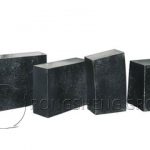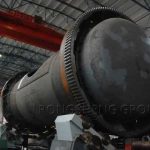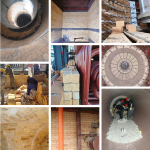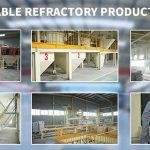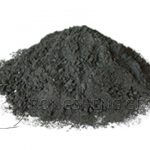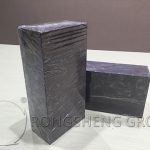At present, in steel production, it is more widely used magnesia-carbon refractories at the slag line position. From the previous masonry of magnesia-carbon bricks to the overall pouring of magnesia-carbon castables. The lining problem existing in the comprehensive refining process affects the life of the overall furnace lining in this link, and the most serious damage is the slag line. So, how to prolong the service life of magnesia-carbon bricks used in the slag line?
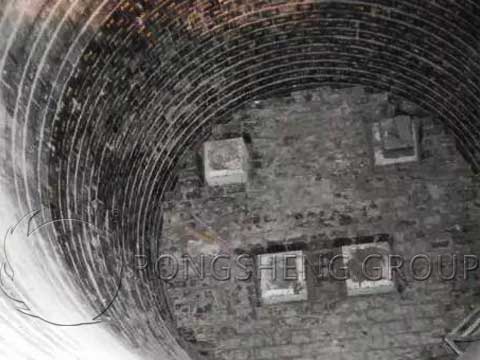
The life of the ladle slag line is mainly affected and restricted by the external environment, the quality of the refractory materials, and the masonry method. As we all know, slag line bricks generally refer to the refractory bricks laid in the area from the third to the eighth floor down from the ladle mouth. The part of the ladle slag line is the part where the molten steel is in direct contact with the air. Due to the temperature difference and the oxygen-enriched environment, the erosion rate of this part is significantly faster than that of other parts. In addition, the tipping and slag discharge operations of molten steel during operation will cause great damage to the slag line. Therefore, the erosion of the ladle slag line has always been a bottleneck problem in the steelmaking and ironmaking industry. The position of the slag line will not only erode too fast, but also have problems such as slag formation, redness, peeling, and steel breakout.
Ways to Prolong the Life of Magnesia-Carbon Bricks for Slag Line
In order to prolong the anti-slag corrosion life of magnesia carbon bricks in the LF furnace, it is necessary to adjust the composition of slag and increase the wetting angle of slag to magnesia-carbon bricks. A stable slag layer is formed on the surface of magnesia-carbon bricks to prevent the oxidation of surface graphite and inhibit the wetting of slag on the surface of magnesia-carbon bricks. Or by optimizing the matrix structure of magnesia-carbon bricks, improving the introduction form and adding the amount of graphite in magnesia-carbon bricks, and adjusting the ingredients of the matrix. This affects the number, size, shape, and distribution of pores formed by carbon oxidation during the use of magnesia-carbon bricks. In turn, the service life of the magnesia-carbon brick of the LF slag line is prolonged.
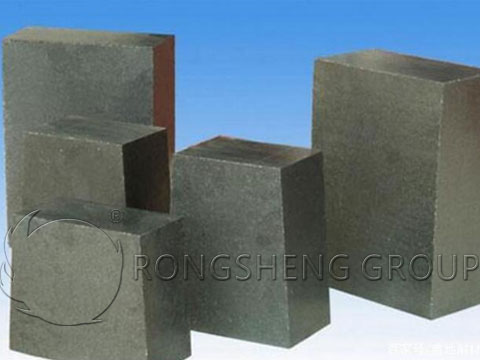
The Main Advantages of Magnesia Carbon Bricks as Slag Line Bricks
Magnesia-carbon bricks are made of high-melting-point alkaline oxide magnesia (melting point 2800°C) and high-melting-point carbon materials that are difficult to be infiltrated by slag as raw materials, and various non-oxide additives are added. It is a non-burning carbon composite refractory material combined with a carbon binder. Magnesia-carbon bricks are mainly used for the lining of converters, AC electric arc furnaces, DC electric arc furnaces, and the slag line of the ladle.
As a composite refractory material, magnesia-carbon brick effectively utilizes the strong slag erosion resistance of magnesia and the high thermal conductivity and low expansion of carbon, which compensates for the poor spalling resistance of magnesia. Its main features are as good high-temperature resistance, strong slag resistance, good thermal shock resistance, and low high-temperature creep.
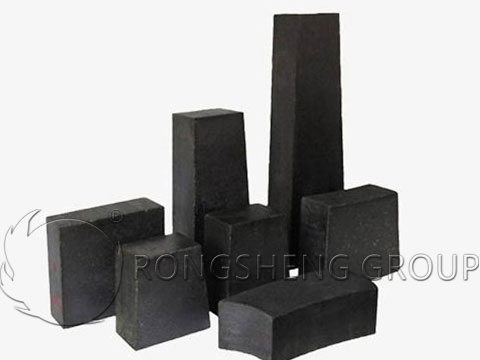
Matters Needing Attention in the Use of Magnesia Carbon Bricks
Magnesia-carbon bricks are made of magnesia, dead-burned magnesia, fused magnesia, high-purity magnesia and high-quality graphite and bauxite additives. The price of magnesia-carbon bricks and its performance have a lot to do with the graphite content in the bricks. As the graphite content increases, the strength of the brick decreases, the thermal expansion rate decreases, and the residual expansion rate increases. It is mainly used for the lining and tapping port of the steel-making oxidation reformer, the hot spot of the furnace wall of the high-power electric furnace, the lining of the refining furnace outside the furnace, the slag line of the steel ladle, etc.
Therefore, the graphite content in the brick should be controlled at about 20%. Magnesia-carbon bricks have low wettability to slag and have excellent resistance to spalling and erosion. It is suitable for the slag line part of the ladle, especially for the occasions where multiple furnaces are continuously poured. In order to meet the needs of producing clean steel, the application part of magnesia-carbon bricks has been expanded from the slag line to the side wall during refining in the ladle.
When laying magnesia-carbon bricks on the ladle, care should be taken not to mix with bricks with high SiO2 content. Otherwise, the local melting loss of magnesia-carbon bricks will be increased.
In the smelting process, the use conditions and damages of various parts of the converter are different. In order to achieve balanced corrosion loss, the grades of magnesia-carbon bricks selected and the quality of magnesia-carbon bricks are also different for each part of the converter under different conditions of use.
The temperature of the furnace mouth and furnace cap changes drastically, and the slag corrosion is more serious. Magnesia-carbon bricks with good thermal shock resistance and strong slag resistance should be selected. Except for the damage caused by blowing, the two sides of the trunnion have no mold slag layer cover on the surface, which is not easy to repair, and the carbon in the brick is easily oxidized. High-quality magnesia-carbon bricks with excellent slag resistance and good oxidation resistance should be built.
The slag line is in contact with the molten slag for a long time, and is seriously corroded by the slag. It is necessary to build magnesia-carbon bricks with excellent slag resistance. When oxygen is blown on the charging side, the splashing effect of slag and molten steel is likely to cause chemical erosion, abrasion, scouring, and direct impact and erosion of the scrap steel and molten iron on the charging side. Magnesia-carbon bricks with strong slag resistance, high high temperature strength and good thermal shock resistance should be selected.
Compared with other parts, the hearth and the bottom of the furnace are less eroded, and ordinary magnesia-carbon bricks can be used. When the top-bottom composite blowing technology is used, especially when CO2, O2 and other gases are blown at the bottom, the damage is more serious. High-grade magnesia-carbon bricks with good oxidation resistance, good thermal shock resistance, high high temperature strength and strong slag resistance should be selected.
The principle is that according to the use of different parts of the converter, the selection of converter magnesia-carbon bricks with corresponding properties is an effective method to improve the technical and economic indicators of the converter.
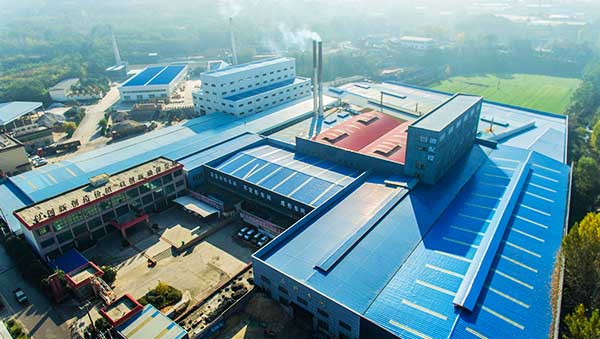
Slag Line Magnesia Carbon Brick Manufacturer
Rongsheng Refractory Manufacturer is an experienced refractory manufacturer, Rongsheng’s refractory products have been sold to more than 70 countries around the world, such as South Africa, Philippines, Chile, Malaysia, Indonesia, Vietnam, Kuwait, Turkey, Zambia, Peru, Mexico, Qatar, Egypt, Russia, Kazakhstan, etc. If you need to solve the problem of refractory lining of industrial furnace, please contact us. We will provide you with the most suitable furnace lining material configuration and high-quality refractory products.



